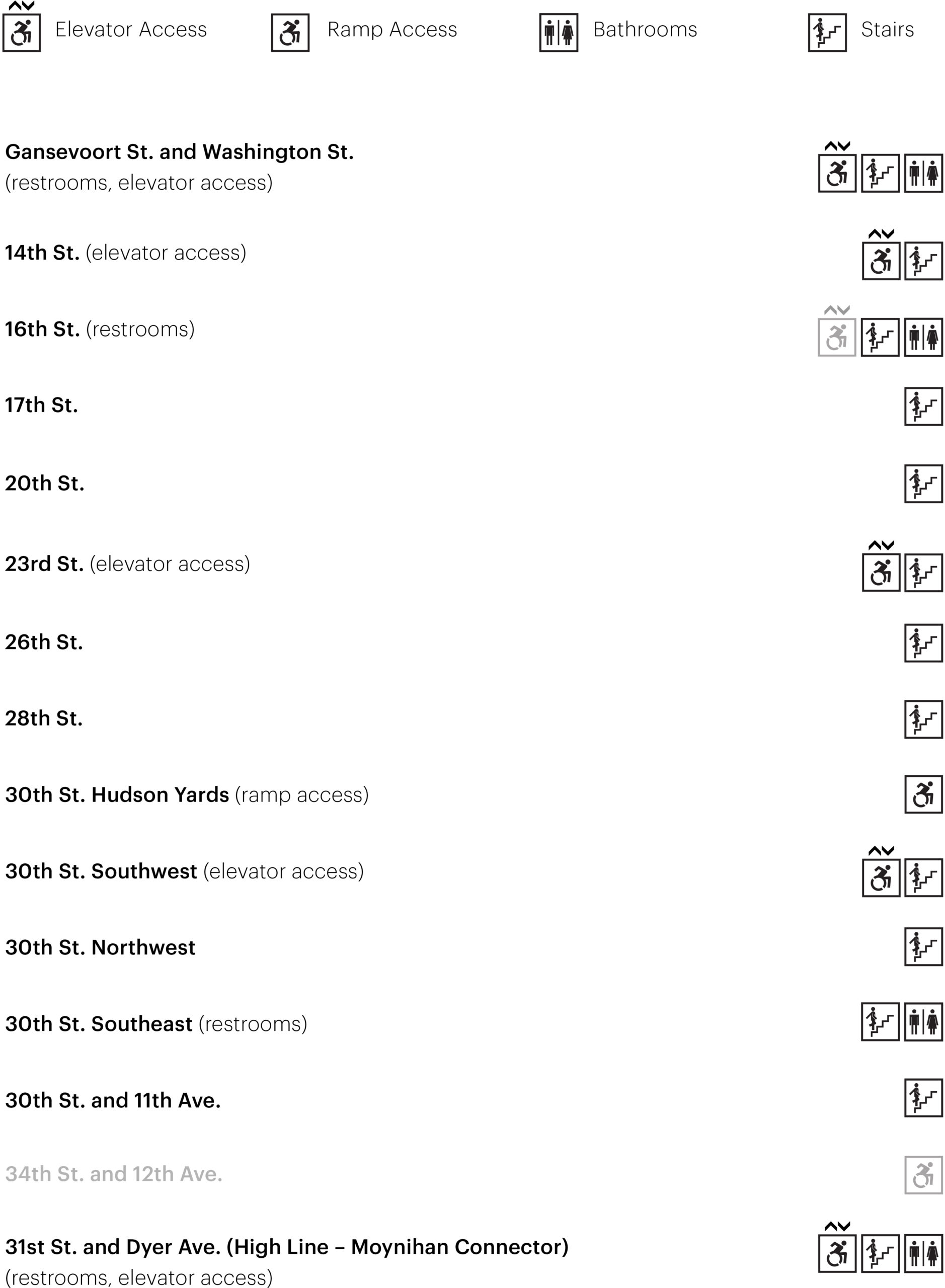your inbox
Sign up for the High Line newsletter for the latest updates, stories, events & more.
Access to the High Line is possible via the stairs, ramps, and elevators listed below.
See the current status of the elevators >
Elevator Status


Subway


Bus


Bike Racks
Bike racks are located at street level near the stairs at the following locations along the High Line. Please note that bicycles are not allowed on the High Line. Additional public bike racks not maintained by the High Line may be located near our entrances.


Citi Bike
The following are not permitted on the High Line:
- Smoking
- Bicycles
- Dogs, except for service dogs
- Use of skateboards, skates, or recreational scooters
- Walking in planting beds or on exposed rail tracks
- Picking flowers or plants
- Sitting on railings or climbing on any part of the High Line
- Drinking alcohol, except in authorized areas
- Littering
- Throwing objects
- Amplified sound, except by permit
- Obstructing entrances or paths
- Solicitation
- Commercial activity, except by permit or otherwise authorized
- Film or photography requiring equipment or exclusive use of an area, except by permit
- Events or gatherings greater than 20 persons, except by permit
One path. Countless ways to explore.
Download the Bloomberg Connects app and explore the High Line’s art, design, and gardens like an insider.
You keep the High Line going
The High Line is almost entirely supported by people like you. As a nonprofit organization, we need your support to keep this public space free—and extraordinary—for everyone.
Donate today

